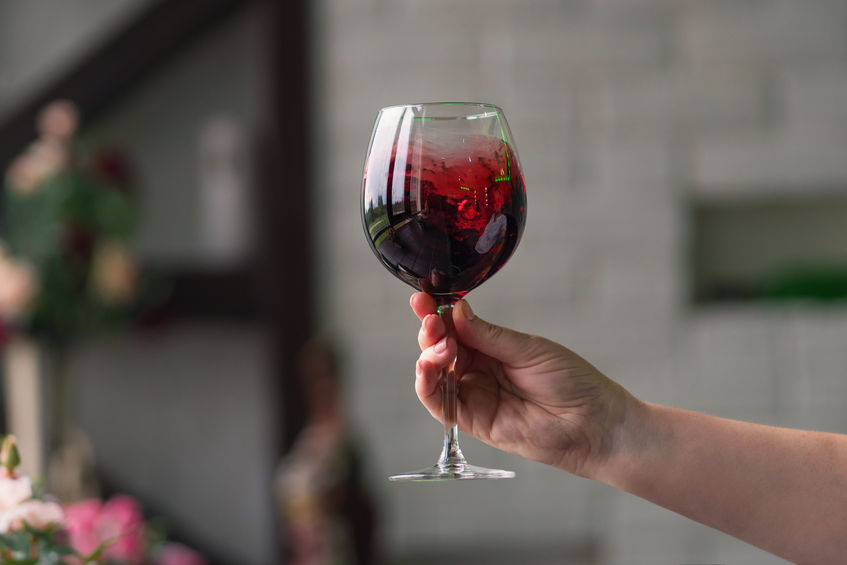The sensory signature of wine awards winners
Wine awards acknowledge wine quality; they give a sense of pride to the winemakers while helping build their reputation in a crowded wine market. At the same time, we, wine lovers, will expect superior quality from wine bottles stamped with a Gold medal sticker. At least that's what the research says. Wine awards are one of the cues we will use to make our purchase decision if we haven't tasted the wine before.

But can we trust these awards? How are they determined?
And do they indeed indicate a wine of superior quality?
What are wine awards?
OIV Criteria to give Wine Awards
Silver and Bronze medals are for scores of 82 and 80 points, respectively.
There is much to be said on local wine challenges; however, wine professionals expect the highest standards from competitions certified by the International Vine and Wine Office. This established organization provides protocols, tasting sheets, and guidelines to ensure the highest ethics and consistent protocols in the wine competitions. Therefore one can expect wine evaluations to be objective; their trusted data become a valuable source of investigation to researchers.
The article entitled "Sensory and chemical characteristics of 'dry' wines awarded gold medals in an international wine competition" reported a study conducted on one of the major international wine competitions, Mundus Vini.
Purpose of the research on wine awards
This group of international researchers specifically studied the dry white wine and red wine competitions from the bi-annual wine competitions, Mundus Vini, held in Dusseldorf, Germany. A panel of wine experts, including enologists, winemakers, traders, sommeliers, and journalists, evaluated more than 4000 wine entries over five days.
The researchers wanted to determine if the wines winning gold medals had consistent chemical or sensory signatures.
This knowledge would help winemakers understand their chance of winning such wine competitions. It would also help us, wine enthusiasts, better understand what tasting experience we could expect from these awarded wines.
Data collected for this study
Let see how their study went.
The scientists only considered the data from the winners of Grand Gold or Gold medals and between 2014 and 2016.
The data downloaded from the competition website included many details, including these elements:
- The winery name
- The vintage year
- Ethanol content
- Residual sugar content
- Total acidity measure
- Flavor descriptors
- Quality indicators
These data described winners of Grand Gold medals (63 red wines and 28 white wines) and winners of Gold medals (2134 red wines and 846 white wines).
A great deal of statistical analyses went through before the researchers could make sense of which elements were most often associated with Grand Gold and Gold medals.
The chemical signature of Grand Gold wine awards
These are the findings:
- Grand gold winners had higher residual sugar (2.85 g/l) than Gold winners (2.76 g/l).
- Grand gold medalists (14.35%v/v) also had a higher ethanol content than Gold winners (14.11%v/v).
These differences are small, though. I doubt that everyone can perceive a difference of 0.09 g/l residual sugars or a variation of 0.24% in ethanol content. Maybe only very well trained tasters can detect these differences.
The sensory signature of Grand Gold wine awards

The quality attributes, Complexity, Potential, and Harmonious persistence, were more present in Grand Gold white wines.
Exotic fruits, and to a lesser extent, Sweetness, Body, Yellow Fruits, and Honey, also seemed to be an indicator of Grand Gold medals for white wines.
The Gold medalists were less intense in fruity notes and characterized by Green vegetative notes and bitterness, descriptors usually less acceptable by wine lovers.

The distinction between Grand gold and Gold red wine winners was easier to understand.
- Again the Grand Gold medalists were described as more Complex, with Harmonious persistence, having more Potential and more Body. Oaky flavors were more dominant, with Spicy, Coffee-Chocolate, and Smoky notes.
- Similarly to the white wines, the Gold medalists were less intense in the winning flavors and were more Green vegetative. The red Gold winners had more often barnyard notes, which can be associated either to wine complexity or a wine defect, depending on its intensity.
I am surprised that the quality descriptors Complex, Harmonious persistence, Potential were used consistently among the evaluators to describe the Grand Gold winners.
What have we learned on wine awards?
The researchers concluded by acknowledging some consistency in the evaluators' judgments over the five competitions analyzed.
What to conclude then? Wines with more fruity notes, oaky notes (for reds), and less astringency, bitterness, and green notes will have more chances to win a Grand Gold medal at the Mindus Vini competition.
It is interesting to me that the winning sensory attributes aligned well with what we know of people's preferences for wines. The scientists described these wine features "consistent with the so-called international wine style." They also regretted that these features disadvantaged cool-climate wines. Indeed these wines tend to be less alcoholic, less sweet, complex, but not exhibiting intense flavors as wines made in warmer regions.
So will you know what to expect next time you see wine bottles with wine awards for sale?
Share your comments and thoughts below.
I love reading your comments and suggestions
Submit them
using this link
Reference:
Manuel Malfeito-Ferreira, Charles Diako & Carolyn F. Ross (2019): Sensory and chemical characteristics of ‘dry’ wines awarded gold medals in an international wine competition, Journal of Wine Research, DOI: 10.1080/09571264.2019.1652154
Published February, 25 2020

